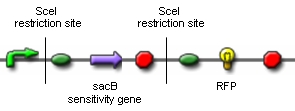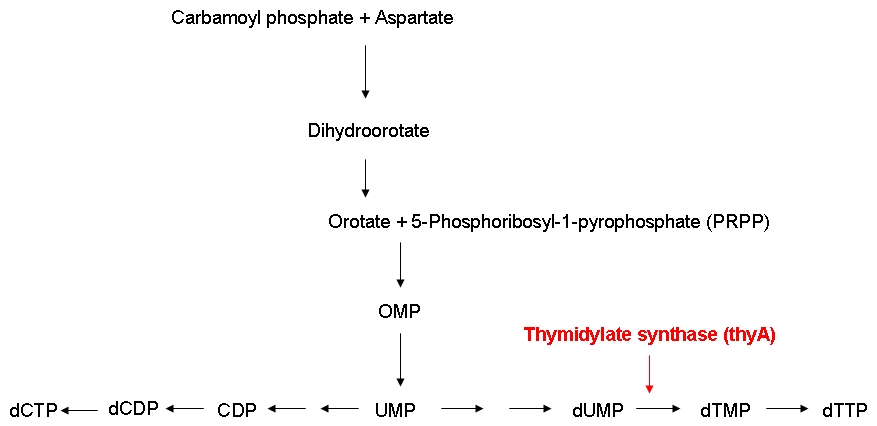Team:ETH Zurich/Wetlab/Overview
From 2008.igem.org
(→Switch circuit) |
(→Outline) |
||
| Line 83: | Line 83: | ||
<div style="text-align:justify;"> | <div style="text-align:justify;"> | ||
'''Questions:''' <br> | '''Questions:''' <br> | ||
| - | * | + | * Can we construct as simple and robust pulse generator that allows pulses of variable duration without modification of the construct? |
* ??? | * ??? | ||
<br> | <br> | ||
'''Method:''' <br> | '''Method:''' <br> | ||
| - | We decided to | + | We decided to build a simple pulse generator based on LacI IS mutants, which upon expression rapidly silence lac-controlled expression despite presence of IPTG. This allows us to induce expression with IPTG and terminate expression by addition of tetracyline.<br><br> |
'''Results:''' <br> | '''Results:''' <br> | ||
We successfully cloned.... Also, we generated xxx by QuickChange mutagenesis. | We successfully cloned.... Also, we generated xxx by QuickChange mutagenesis. | ||
Revision as of 03:25, 30 October 2008
|
OverviewIn order to approach our goal of creating an E. coli strain carrying a minimal genome, there are three main problems that have to be overcome:
Chemostat selection: introduce a limitation that confers a growth advantage to organisms with smaller genomes Switch circuit: design a biobrick that provides for short-term synthesis of the desired gene products
Genome ReductionTo prove that in vivo restriction and religation is possible is fundamental to our project which relies on short-term expression of a restriction enzyme and a ligase. While the restriction enzyme will randomly cut DNA, the simultaneous or shortly delayed synthesis of the ligase should religate the DNA. If the DNA is cut at several sites, religation will lead to exclusion of chromosomal fragments in a random manner. Chemostat selectionIn the continuous culture of a chemostat, those organisms with the highest rate of proliferation will overgrow those with a smaller growth rate. In order to bypass the need of selecting for those E. coli which have successfully reduced their genomes by massive screening of thousands of clones, we need to introduce a constraint that confers a growth advantage to organisms with smaller genomes. We have chosen to introduce mutations in the nucleotide synthesis pathway to achieve this goal. This will render DNA replication the rate-limiting step of proliferation and therefore be advantageous to organisms with small genomes. Switch circuitExpression of restriction enzymes that cut genomic DNA inside the cell is likely to decrease viability. Actually, the Waterloo iGEM team is using restriction enzymes to kill cells in their project this year. Therefore, construction of a switch circuit, which allows to restrict expression of the restriction enzyme to a short period of time, is a crucial part of the project. The switch circuit allows expression of a gene under control of the lac repressor and rapid termination of lac-controlled expression despite presence of inducer by expression of an engineered LacI mutant, which is unresponsive to IPTG.
Outline
|
 "
"

